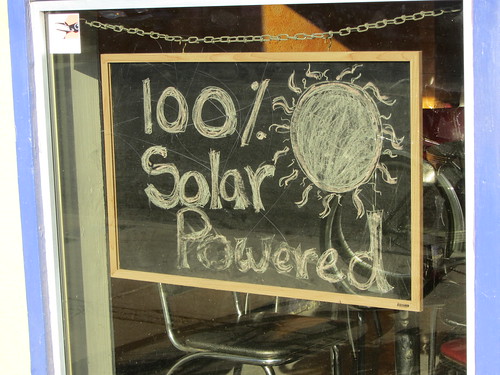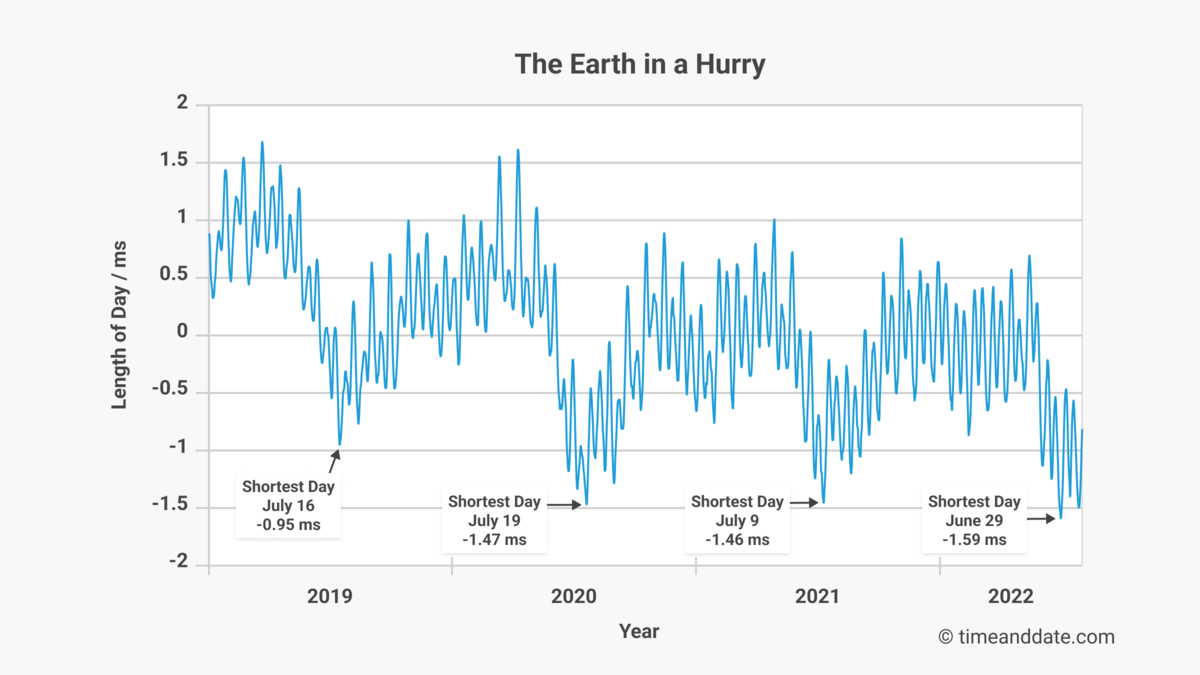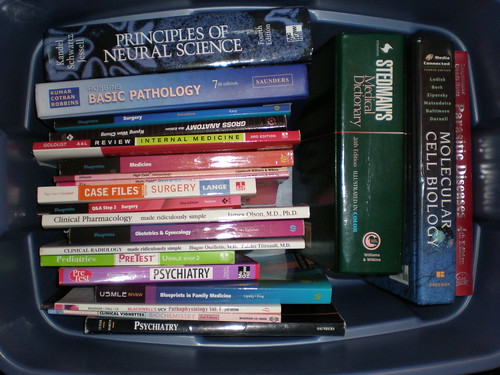
If you live in France, make sure to declare your pool (which attracts extra tax). AI plus satellite photos will spot it. CC-licensed photo by Alex Ford on Flickr.
You can sign up to receive each day’s Start Up post by email. You’ll need to click a confirmation link, so no spam.
A selection of 9 links for you. Seasonal. I’m @charlesarthur on Twitter. Observations and links welcome.
How Twitter’s child porn problem ruined its plans for an OnlyFans competitor • The Verge
Zoe Schiffer and Casey Newton:
»
In the spring of 2022, Twitter considered making a radical change to the platform. After years of quietly allowing adult content on the service, the company would monetize it. The proposal: give adult content creators the ability to begin selling OnlyFans-style paid subscriptions, with Twitter keeping a share of the revenue.
Had the project been approved, Twitter would have risked a massive backlash from advertisers, who generate the vast majority of the company’s revenues. But the service could have generated more than enough to compensate for losses. OnlyFans, the most popular by far of the adult creator sites, is projecting $2.5bn in revenue this year — about half of Twitter’s 2021 revenue — and is already a profitable company.
Some executives thought Twitter could easily begin capturing a share of that money since the service is already the primary marketing channel for most OnlyFans creators. And so resources were pushed to a new project called ACM: Adult Content Monetization.
Before the final go-ahead to launch, though, Twitter convened 84 employees to form what it called a “Red Team.” The goal was “to pressure-test the decision to allow adult creators to monetise on the platform, by specifically focusing on what it would look like for Twitter to do this safely and responsibly,” according to documents obtained by The Verge and interviews with current and former Twitter employees.
What the Red Team discovered derailed the project: Twitter could not safely allow adult creators to sell subscriptions because the company was not — and still is not — effectively policing harmful sexual content on the platform.
“Twitter cannot accurately detect child sexual exploitation and non-consensual nudity at scale,” the Red Team concluded in April 2022. The company also lacked tools to verify that creators and consumers of adult content were of legal age, the team found.
«
Elon Musk’s legal team will be scrambling to get this into their latest missive complaining about the timing and content of their trial to avoid paying $44bn. To users of Twitter, this will sound very unsurprising: sure, it’s run really badly. But objectively, it’s appalling. That’s what matters.
unique link to this extract
French tax officials use AI to spot 20,000 undeclared pools • The Guardian
Kim Willsher:
»
French tax authorities using AI software have found thousands of undeclared private swimming pools, landing the owners with bills totalling about €10m.
The system, developed by Google and Capgemini, can identify pools on aerial images and cross-checks them with land registry databases. Launched as an experiment a year ago in nine French departments, it has uncovered 20,356 pools, the tax office said on Monday, and will be extended across the country.
Modifications to property, including adding swimming pools, must be declared to the tax office within 90 days of completion. As property taxes are based on the rental value of the property, improvements mean an increase in taxes. A typical pool of 30 sq metres would be taxed at about an extra €200 a year.
The tax office – or le fisc, as it is known – says it is now looking at using the system to spot undeclared annexes, extensions and verandas including permanent pergolas.
“We are particularly targeting house extensions like verandas, but we have to be sure that the software can find buildings with a large footprint and not the dog kennel or the children’s playhouse,” Antoine Magnant, the deputy director general of public finances, told Le Parisien newspaper.
However, the tax authorities’ technical team say they are not yet able to establish whether a rectangular shape on an aerial image is an extension or a tent, terrace or even tarpaulin placed on the ground.
In April it was claimed that the Google-Capgemini software had a 30% margin of error. Not only was it mistaking solar panels for swimming pools, but it was failing to pick up taxable extensions hidden under trees or in the shadows of a property. Tests are being carried out to perfect the technology.
«
Expected next year: movable grass cover for pools; people who will make your pool non-rectangular; dark tiles for the bottom of the pool so it doesn’t show up as light blue.
unique link to this extract
Stable Diffusion is a really big deal • Simon Willison’s Weblog
Simon Willison:
»
If you haven’t been paying attention to what’s going on with Stable Diffusion, you really should be.
Stable Diffusion is a new “text-to-image diffusion model” that was released to the public by Stability.ai six days ago, on August 22nd.
It’s similar to models like Open AI’s DALL-E, but with one crucial difference: they released the whole thing. You can try it out online at beta.dreamstudio.ai (currently for free). Type in a text prompt and the model will generate an image. You can download and run the model on your own computer (if you have a powerful enough graphics card).
You can use it for commercial and non-commercial purposes, under the terms of the Creative ML OpenRAIL-M license—which lists some usage restrictions that include avoiding using it to break applicable laws, generate false information, discriminate against individuals or provide medical advice.
…I’m finding the ethics of all of this extremely difficult.
Stable Diffusion has been trained on millions of copyrighted images scraped from the web. The Stable Diffusion v1 Model Card has the full details, but the short version is that it uses LAION-5B (5.85 billion image-text pairs) and its laion-aesthetics v2 5+ subset (which I think is ~600M pairs filtered for aesthetics). These images were scraped from the web.
I’m not qualified to speak to the legality of this. I’m personally more concerned with the morality.
The final model is I believe around 4.2GB of data—a binary blob of floating point numbers. The fact that it can compress such an enormous quantity of visual information into such a small space is itself a fascinating detail. As such, each image in the training set contributes only a tiny amount of information—a few tweaks to some numeric weights spread across the entire network.
But… the people who created these images did not give their consent.
«
This is going to be the ticklish question. Will future content say “no AI was used in the creation of this image/video”?
unique link to this extract
Cloudflare pressured to drop Kiwi Farms after latest doxing effort • Daily Dot
Claire Goforth:
»
Users of Kiwi Farms are currently terrorizing Twitch streamer and transgender rights activist Clara Sorrenti. Sorrenti, who goes by Keffals online, recently fled her home after being “swatted.” A person impersonating Sorrenti reportedly sent local lawmakers a mass shooting threat, leading police to arrest Sorrenti. She was released without charges.
Then she was reportedly doxed again by Kiwi Farms users who analyzed the bedsheets at her hotel to determine her location.
The content on Kiwi Farms is notoriously transphobic. In March, one of the site’s users took aim at Sorrenti based on the belief that she played a role in getting another Twitch streamer booted from that platform for transphobia. The comment thread they started now spans more than 1,200 pages and thousands of comments
Now Sorrenti is in hiding. She’s also campaigning to convince Cloudflare to stop hosting Kiwi Farms, which has become a haven for far-right doxing and trolling efforts. The push is gaining steam online.
Kiwi Farms has played a central role in some of the internet’s worst moments. The Christchurch mass shooting videos were hosted there. When a police officer emailed the site’s founder for information about the shooter, he reportedly responded by posting the email without redacting the officer’s address.
Antifa obsessive Andy Ngo has also joined in the fray, defending the site and claiming it merely posts about leftist extremists.
Ngo, who’s been repeatedly accused of coordinating with far-right extremists, responded to Sorrenti’s efforts by misleading about Kiwi Farms. “The internet forum site features threads of photos and information about Antifa militants & other far-left extremists,” Ngo tweeted.
Sorrenti replied that Kiwi Farms’ users are also currently attempting to dox the police chief of London, Ontario, where she lives.
«
Analysing the bedsheets. Another person was located because they mentioned their snow boots had fallen apart. If it weren’t so hate-driven, it would be admirable. But anything Ngo backs is, you can be sure, in the wrong. Deplatforming takes away the platform – nothing more, but certainly nothing less.
unique link to this extract
Snap plans to lay off 20% of employees • The Verge
Alex Heath:
»
Snap is planning to lay off approximately 20% of its more than 6,400 employees, according to people familiar with the matter.
The layoffs, which Snap has been planning for the past several weeks, will begin on Wednesday and hit some departments harder than others, the people said. For example, the team working on ways for developers to build mini apps and games inside Snapchat will be severely impacted. Zenly, the social mapping app Snap bought in 2017 and has since run separately, will also see deep cuts.
Another team that will see layoffs is Snap’s hardware division, which is responsible for its AR Spectacles glasses and the Pixy camera drone that was recently canceled after being on sale for just a few months. The company’s ad sales organization is also being restructured.
Russ Caditz-Peck, a Snap spokesperson, declined to comment.
Though the scale of the layoffs is significant, it shouldn’t necessarily come as a surprise: Snap’s stock price has lost nearly 80% of its value since the beginning of this year, and the company said in May that it would slow hiring and look for ways to cut costs. It then delivered dismal earnings for the second quarter and said it wouldn’t forecast results for the third quarter.
Like its other tech peers, Snap hired aggressively during the pandemic. It entered March of 2020 with roughly 3,427 full-time employees and ended last quarter with 6,446, a 38% increase from the same time last year. And in May of 2021, the company made its largest acquisition ever by buying WaveOptics, the supplier of the AR displays used in its latest Spectacles, for more than $500m.
«
Think I can see where they may have gone wrong.
unique link to this extract
‘Insane’ prices will make people abandon gas, says Wintershall Dea CEO • Reuters via Yahoo Finance
Nora Buli:
»
Wholesale gas prices have scaled “insane” levels that will ultimately hurt demand, although the lack of Russian gas means Europe’s supply will be tight for several years, the chief executive of German oil firm Wintershall Dea said on Tuesday.
The benchmark European gas contract has risen by more than 300% in a year and on Friday touched a record high of 343.08 euros per megawatt hour (MWh).
On Tuesday it fell to 259 euros/MWh, as Europe almost reached its target of filling gas stores to 80% as a security policy ahead of the peak demand winter months, but prices remain well above normal levels.
“The prices we are having currently are insane. That is nothing even a gas producer is looking for because in the end, we are going to massively destroy demand for our product,” Mario Mehren told reporters on the sidelines of an energy conference.
“Whoever has a chance to walk away from gas is walking away from gas and we don’t know if they’re coming back.”
High prices have already cut fertiliser production in Europe and many other big users of gas are seeking ways to reduce consumption.
Mehren said the best way to stabilise prices was to show there is sufficient supply not just this winter, but also for the next winters.
«
Continues to be astonishing that the most effective climate warrior the planet has ever seen is someone who rules a country with colossal fossil fuel reserves. However, I don’t think there’s much chance of Vladimir Putin winning the Nobel Peace Price.
unique link to this extract
Lord of the pings: how I turned off my phone notifications, and got my life back • The Guardian
Georgina Lawton:
»
The reasons for turning off your notifications are numerous: better focus and concentration, being more present, better sleep, feeling in control of your life. When people who are still at the mercy of pings, rings and push notifications ask me how it all works, I paraphrase my ex: “You just check your phone as and when you need to.” My friends look horrified. But in this era of constantly breaking news, keeping them on seems like self-flagellation. Allowing yourself to become panicked by yet another depressing political update as it unfolds, or the news that your ex has had a baby, is like having an extra voice in your ear saying: “You’re worthless, no one loves you – and you’re doomed!” I actually like to schedule in some time for self-loathing around 7pm on Sunday instead of having it forced upon me ad hoc by my phone, thanks very much.
If you’re too scared to switch everything off from your phone’s main settings, you can try apps that limit time on certain apps, or just switch off notifications individually and ease yourself in gently. It can happen in stages. First you can try your big social media ones: Instagram, Facebook, Twitter, et al. Chances are you won’t actually miss the empty feeling that comes from browsing the lives of others and hearing awful news 24/7.
Then if you’re feeling braver, go for your email notifications. Friends who work as business managers, editors and lawyers tell me that there’s no way they could do that for fear of missing out on an important message and jeopardising their whole career. “I could be deemed negligent and get sacked,” the lawyer said, before admitting that his work phone never goes off and that he has notifications on both his personal and work phones. But are we ever paid enough to be on call 24/7? (Actually, the lawyer probably is). Surely, setting aside a slot in your day to respond to work messages is more time-efficient than frantically picking up your phone every time it goes off and distracting yourself from other urgent tasks?
«
Fabulous headline. An Apple Watch is a pricey way of doing much the same thing: you can pick and choose which notifications you get. Or just turn on Do Not Disturb.
unique link to this extract
SmartDry’s useful laundry sensor to be cloud-bricked next month • Ars Technica
Kevin Purdy:
»
SmartDry was a smart home product that did something useful: tell you when your clothes in your dryer were actually dry.
A small pack mounted inside nearly any dryer drum could prevent clothes from shrinking, save you energy costs (at least $60 per year, the marketing claimed), and even warn you about clogged vents causing high heat—or, much worse, gas buildup. A second-generation version could even turn off your gas dryer automatically. Reviewers greatly preferred it to their own dryers’ unpredictable dryness sensors.
The problem is that SmartDry alerted you to dry clothing by connecting to your home’s Wi-Fi; the device sent a message to parent company Connected Life’s servers and then relayed that message to your smartphone. But Connected Life Labs is closing, discontinuing SmartDry, and shutting down its servers on September 30. After that, “cloud services will cease operations and the product apps will no longer be supported.”
In other words, SmartDry will become a tiny brick inside your dryer unless you’re willing to procure a little ESP32 development board, load some code onto it, plug it in near your dryer, and set up your own alerts in your Home Assistant server. If you had a first-generation SmartDry, this would actually be a slight improvement, as those devices used Espressif ESP32 chips with a forever vulnerability.
«
Depends a bit on your tumble dryer – Overspill Central’s has its own sensor (and captures the water!), but there are lots of ageing tumble dryers in the US, where this might be useful. Well, not any more.
unique link to this extract
How time became the scarcest commodity in UK energy • Financial Times
Helen Thomas:
»
a social tariff that cuts say 30% from bills, would tackle usage. But [the Resolution Foundation’s] idea of targeting households where no one earns over £40,000 hits a database problem, essentially requiring HMRC’s systems to connect with other bits of government. That’s not impossible but it requires time: broadly, we should have started months ago.
The same is true elsewhere. In fairness, the energy department is trying to fast-track elements of complex, long-term market reform, such as unlinking domestic power prices and gas prices.
The government reportedly wants to shift generating companies on old-style renewables obligation contracts, which in effect pay wholesale gas prices for renewable power, on to cheaper 15-year fixed price deals. These contracts account for about 18GW of wind power alone, or a quarter of UK generating capacity. “If you have a block of cheap low carbon power, you could sell that directly at a cheap fixed rate to vulnerable consumers,” said Adam Bell, a policy adviser at consultancy Stonehaven and former government energy strategist.
This year could and should have been spent improving the UK’s paltry home insulation rate from 200,000 a year back towards the 2m the market routinely managed before 2013. That was an obvious, no-regret choice six months ago. Instead, the government is currently relying on common sense and hardship to get people to reduce gas usage by 8% simply by adjusting their boiler settings to run more efficiently.
The scale of the problem means there are no great options for protecting households, especially because the support needed is essentially open-ended. The risks are a bigger, broader, more expensive scheme than really necessary, or an inadequate stop-gap that leaves many out in the cold. Either way, we are also trying to buy back time that has been squandered.
«
There have been so many ways to catch up, but an utterly useless government failed to do so again and again. Now everyone, including the government (but ultimately the taxpayer) pays the price.
unique link to this extract
| • Why do social networks drive us a little mad? • Why does angry content seem to dominate what we see? • How much of a role do algorithms play in affecting what we see and do online? • What can we do about it? • Did Facebook have any inkling of what was coming in Myanmar in 2016? Read Social Warming, my latest book, and find answers – and more. |
Errata, corrigenda and ai no corrida: none notified










